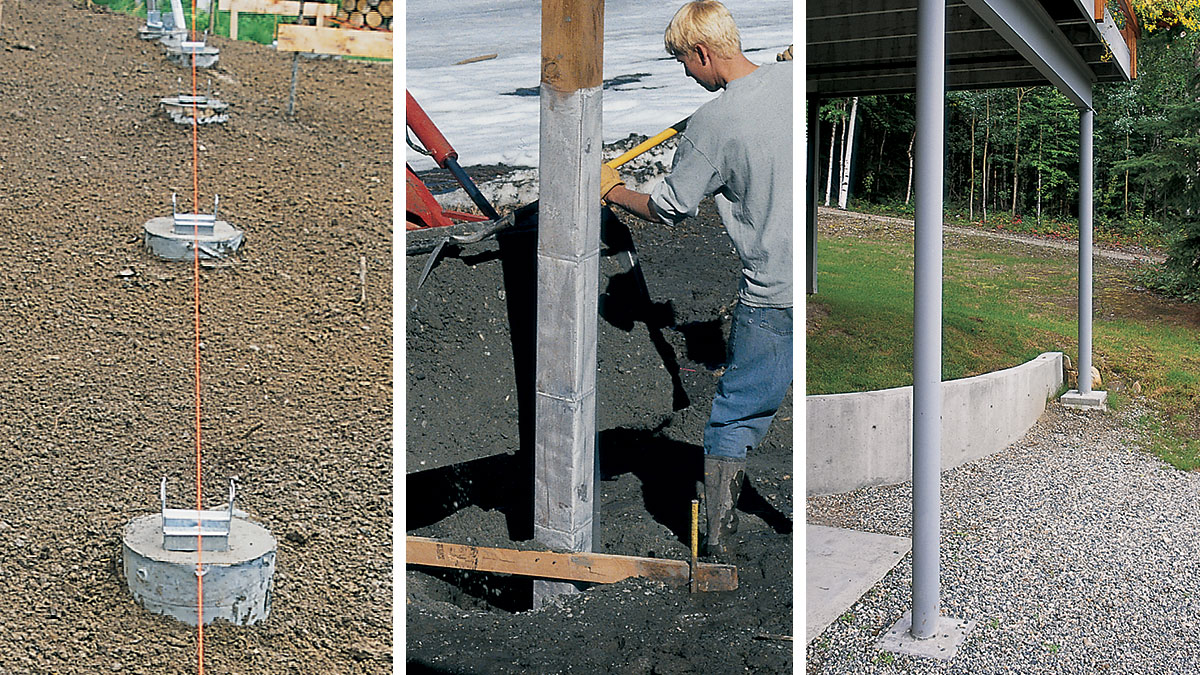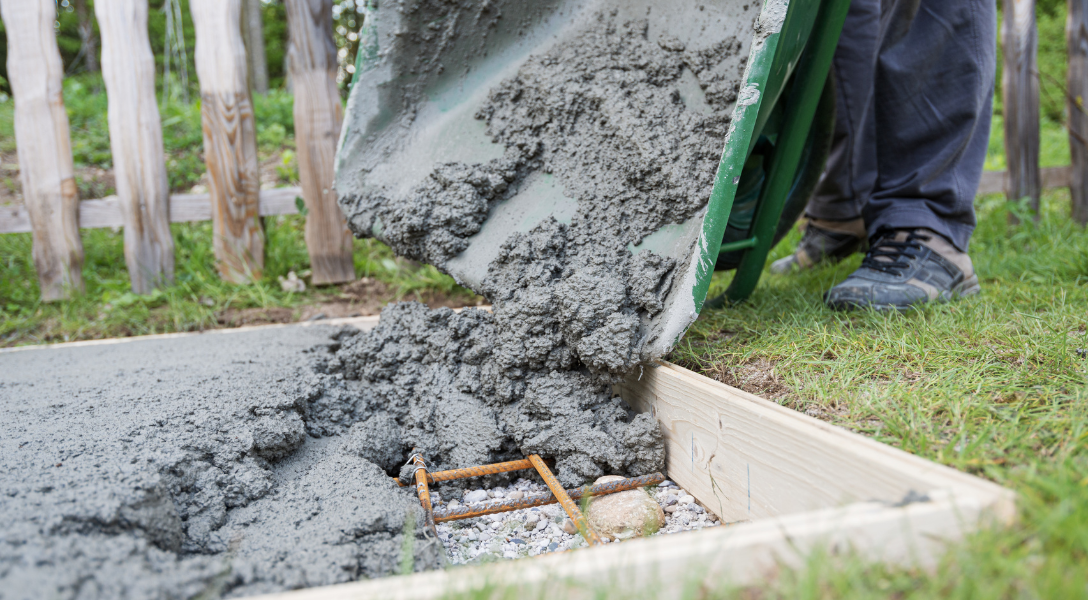Guarantee Security and Longevity With Appropriately Installed Deck Grounds
Deck footings may not be the most glamorous facet of deck building and construction, yet they play a vital duty in making certain security and durability. In this discussion, we will discover the relevance of appropriate deck footings, factors to take into consideration throughout setup, different kinds of grounds offered, step-by-step installment guide, and maintenance pointers for making sure lasting grounds.

Value of Correct Deck Footings
Why are correctly set up deck grounds crucial for the stability and durability of your deck? The solution depends on the basic role that deck footings play in supporting the weight of the entire structure. Deck footings are the foundation on which the deck rests, transferring the tons from the deck to the ground. When grounds are not effectively mounted, it can lead to a series of issues that compromise the stability and longevity of the deck.
To start with, appropriately set up deck footings distribute the weight of the deck evenly, avoiding any kind of irregular settling or sinking. This is especially crucial in areas with unstable dirt, as it aids to alleviate the danger of the deck breaking down or moving. Furthermore, well-installed footings ensure that the deck continues to be degree, stopping any structural damages that can happen when a deck becomes irregular.
Second of all, correctly installed grounds offer a solid support for the deck, stopping excessive activity and persuade. This assists to maintain the architectural stability of the deck, decreasing the threat of injuries or accidents. It likewise reduces the deterioration on the deck, allowing it to hold up against the aspects and regular use for a longer amount of time.
Aspects to Consider for Deck Ground Installation
When setting up deck footings, there are several vital variables to take into consideration for correct setup. Different dirt types have different load-bearing abilities, so it is crucial to perform a dirt test to ensure the grounds can support the weight of the deck and its occupants. By taking right into account these aspects, you can make sure the proper installment of deck grounds and delight in a stable and durable deck.
Sorts Of Deck Footings to Select From
There are numerous different kinds of deck footings readily available for you to pick from. Each type has its very own advantages and negative aspects, so it's important to consider your details requirements and the conditions of your deck prior to making a decision.
One usual sort of deck ground is the concrete footing. This involves digging openings in the ground and putting concrete into them to create a strong structure. Concrete footings are durable and give exceptional security, making them suitable for decks in areas with tough soil conditions or high wind tons.
One more choice is the helical pier footing, which includes a steel shaft with helical plates that are screwed into the ground. These footings are fast to mount and can be utilized in numerous dirt types, consisting of sandy or clay soils. They are likewise adjustable, enabling very easy progressing of the deck.
Sonotube grounds are one more preferred choice. These footings are developed by putting a cardboard tube in a hole and filling it with concrete. Sonotube grounds are fairly easy to mount and offer adequate security for smaller decks or in locations with less requiring soil problems.

When choosing the sort of deck footing, it's important to think about aspects such as soil conditions, deck size and weight, local building regulations, and individual preferences. By choosing the suitable footing type, you can guarantee the stability and longevity of your deck.
Step-by-Step Overview for Putting Up Deck Footings

Establish the location: Start by noting the exact setting of each ground using stakes and string (Deck Footings). Take into consideration any type of neighborhood building codes or policies pertaining to setback distances
Dig the openings: Make use of a post hole digger or an auger to dig the openings for the grounds. The depth will depend upon the frost line in your location and the kind of soil. Typically, a depth of at the very least 36 inches is advised for security.
Degree the holes: Guarantee that all-time lows of the holes are level (Deck Footings). This can be attained by making use of a level or a straight board across the top of the holes
Add gravel: Location a layer of gravel at the base of each hole to enhance drain and stop the footing from penetrating the dirt with time.
Put the ground kinds: Put the ground develops into the holes, ensuring they are centered and level. Usage risks to secure them in location.
Mix and pour concrete: Follow the instructions on the concrete mix bag to prepare the concrete. Pour the concrete into the ground kinds, loading them totally.
Smooth the surface: Utilize a trowel to smooth the surface of the concrete and remove any air pockets. Enable the concrete to treat according to the maker's directions.
Maintenance Tips for Lasting Deck Footings
Proper upkeep is important for making certain the long life and stability of deck footings. By on a regular basis evaluating and keeping your deck footings, you can prevent damages and potential safety and security threats. One crucial element of maintenance is to regularly look for any type of signs of deterioration, such as splits or movement in the grounds. It is click for more info important to resolve look at this now them quickly to avoid more damage. if you see any type of concerns.
Routine cleansing is also necessary for maintaining deck footings. Particles, dirt, and plants can collect around the footings, which can result in moisture accumulation and degeneration. Cleaning up the grounds regularly, utilizing a pressure or a brush washer, can assist stop these concerns and extend the lifespan of your deck.
Along with cleansing, it is necessary to keep the area around the grounds clear of any type of obstructions. Prevent piling things against the footings or allowing plants to grow as well near to them. These blockages can catch moisture and cause the footings to weaken gradually.
Last but not least, normal resealing of the grounds is advised to shield them from dampness and various other ecological factors. Applying a waterproof sealant can help avoid water damages and expand the life-span of the grounds.
Verdict
In verdict, correct installment of deck grounds is critical for ensuring stability and longevity of your deck. Factors such as dirt kind, lots capability, and local building regulations require to be considered when picking the best kind of deck footings. Adhering to a detailed guide for installation and normal upkeep will certainly aid to ensure the grounds continue to be long-lasting and sturdy.
In this conversation, we will discover the value of appropriate deck footings, aspects to think about during installation, various kinds browse around these guys of footings readily available, step-by-step installation overview, and maintenance tips for making certain resilient footings. Deck grounds are the foundation on which the deck relaxes, moving the load from the deck to the ground.One usual kind of deck ground is the concrete footing. Put the footing kinds: Place the ground develops right into the holes, guaranteeing they are centered and degree.In conclusion, correct installment of deck footings is essential for making certain stability and long life of your deck.